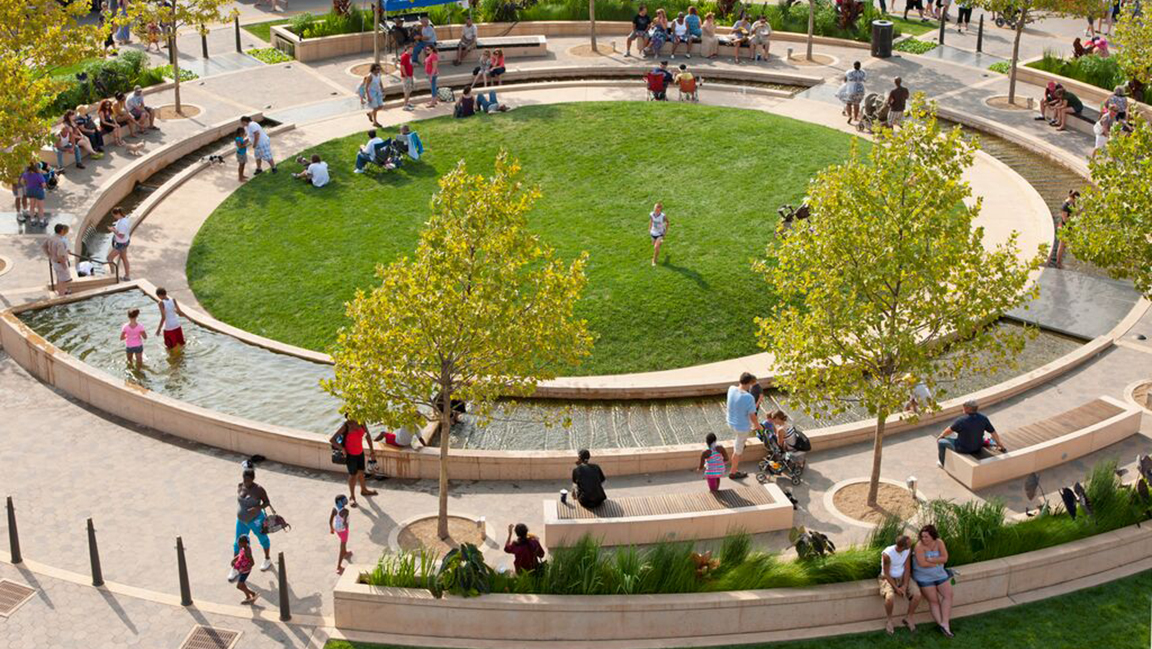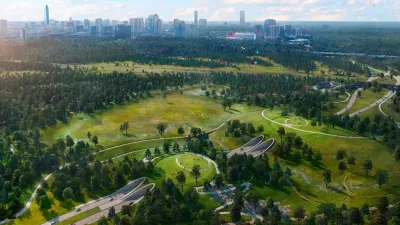The death of the Chicago landscape architect, Peter Schaudt, leaves an unfinished body of work and a deep void within the profession that adored him.

I was in the middle of working on a piece about the landscapes of Chicago when I received the sad news that Peter Lindsay Schaudt, a partner in the Chicago landscape architecture firm, Hoerr Schaudt, had passed away at the far too young age of 56. To say he will be missed hardly begins to cover the impact his loss will have on his family, friends, colleagues, clients, the city of Chicago, and the profession of landscape architecture. He was an amazing person, a good friend, and a terrific designer.
Peter was one of the most respected and celebrated landscape architects of his generation. He had earned a level of recognition and admiration that few achieve in their entire careers. He received the prestigious Rome Prize in 1990 and was made a Fellow of the American Society of Landscape Architects (ASLA) in 2006. Early on, he was a protégé of the great Dan Kiley, whose influence became integral to his own work. His designs reflect a similar sense of structure and organization as that of Kiley, but were entirely his own. Peter didn't copy the work of others, but he also never hesitated to credit those who influenced him.
Peter was never driven by a need to "leave his mark" on a particular landscape. Whether in urban, civic, or campus environments, the places he designed were always appropriate to their context and to the community that would use them. He loved learning the history of a specific site, and found ways to ingeniously incorporate it into his designs. His work was always about the place, not about his ego. In fact, there was very little ego in Peter's personality, which made him a refreshing anomaly in the upper echelon of the design world that he inhabited.

He was most inspired by projects that could leverage the interdependence that exists between built form and landscape. He loved the challenges that came with creating landscapes that work seamlessly with adjacent architecture, which makes sense since he was first trained as an architect. By no coincidence, one of the proudest moments of Peter's career came when the American Institute of Architects awarded him the AIA Collaborative Achievement award, a recognition that symbolized the respect he earned from the architecture community. That collaborative spirit defined his personality and his process, as was well known by people familiar with his work on Chicago's Olympic bid and on various planning and design committees. He was selfless with his time, constantly volunteering in any capacity he thought would make a difference to his community and the profession he loved.
Although he was certainly proud of his chosen profession, Peter was constantly frustrated by the lack of understanding the general public had about it. When people would ask him what he did for a living, he would often say he was an architect to deflect misconceptions spurred by the term landscape. As he wrote in Landscape Architecture Magazine in 2012: "It is more important, in my opinion, to tell the story of what we do rather than worry about how we are categorized or named." He understood and acknowledged how projects like the High Line and Millennium Park were broadening the image of landscape architecture, but was far too modest to acknowledge that his work was doing the same. His is quite a legacy.
I had the honor of being friends with Peter over the past decade and can say without hesitation that I never heard even a hint of a bad word spoken about him. He was beloved among the entire landscape architecture community. People who knew him will remember him for the heartfelt smile that rarely left his face, his constant good cheer and optimism, and the endless passion he had for the work he did as a landscape architect. He cared deeply for the places he designed, and for the people who would use them. Clients and colleagues inevitably became his friends, and his friends became his family.
This was the spirit of Peter Schaudt. He will be greatly missed.

Alabama: Trump Terminates Settlements for Black Communities Harmed By Raw Sewage
Trump deemed the landmark civil rights agreement “illegal DEI and environmental justice policy.”

Planetizen Federal Action Tracker
A weekly monitor of how Trump’s orders and actions are impacting planners and planning in America.

How Atlanta Built 7,000 Housing Units in 3 Years
The city’s comprehensive, neighborhood-focused housing strategy focuses on identifying properties and land that can be repurposed for housing and encouraging development in underserved neighborhoods.

In Both Crashes and Crime, Public Transportation is Far Safer than Driving
Contrary to popular assumptions, public transportation has far lower crash and crime rates than automobile travel. For safer communities, improve and encourage transit travel.

Report: Zoning Reforms Should Complement Nashville’s Ambitious Transit Plan
Without reform, restrictive zoning codes will limit the impact of the city’s planned transit expansion and could exclude some of the residents who depend on transit the most.

Judge Orders Release of Frozen IRA, IIJA Funding
The decision is a victory for environmental groups who charged that freezing funds for critical infrastructure and disaster response programs caused “real and irreparable harm” to communities.
Urban Design for Planners 1: Software Tools
This six-course series explores essential urban design concepts using open source software and equips planners with the tools they need to participate fully in the urban design process.
Planning for Universal Design
Learn the tools for implementing Universal Design in planning regulations.
Jessamine County Fiscal Court
Caltrans
Institute for Housing and Urban Development Studies (IHS)
City of Grandview
Harvard GSD Executive Education
Toledo-Lucas County Plan Commissions
Salt Lake City
NYU Wagner Graduate School of Public Service





























